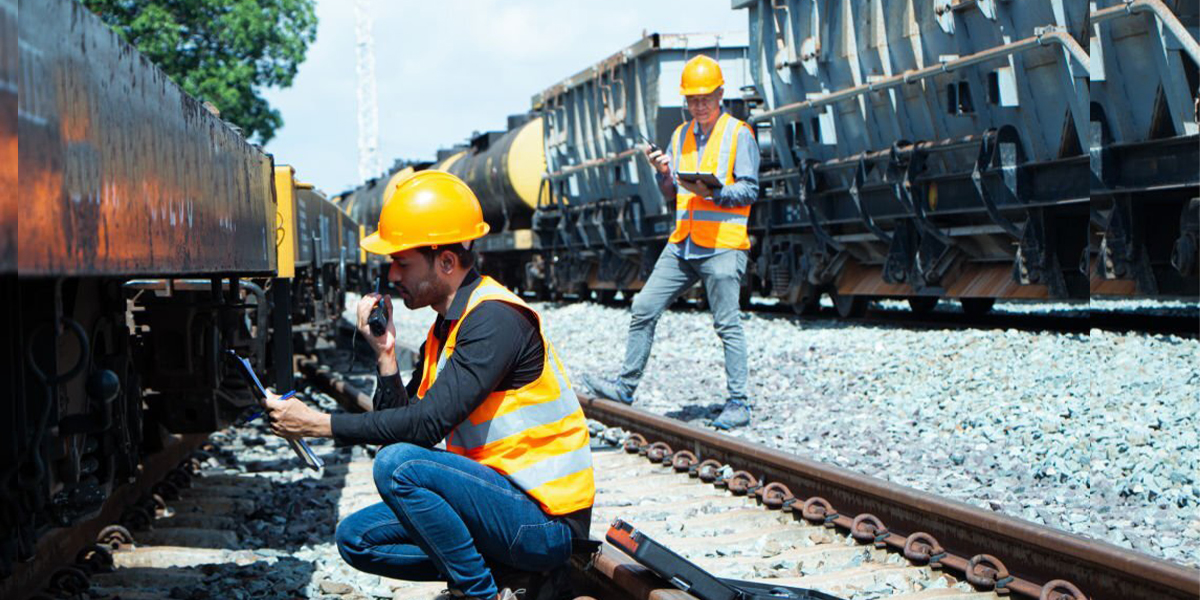Blog on RFID Technology and IoT Solutions
Blog Home
RFID in Railway
23 May 2023What is RFID (Radio Frequency Identification)?
RFID in Railway, RFID stands for Radio Frequency Identification. It is a technology that uses radio waves to wirelessly identify and track objects, people, or animals. An RFID system typically consists of a reader (or interrogator) that sends a radio signal to an RFID tag attached to an object, and the tag responds with information, such as a unique identifier or other data. RFID technology can be used in a variety of applications, such as asset tracking, inventory management, access control, payment systems, and more.
How RFID Technology is being used in the Railroad sector?
RFID (Radio Frequency Identification) technology is being utilized in various ways in the railroad sector to improve efficiency and safety. For Example, Swiss Federal Railways (SBB) recognized the importance of reliable vehicle identification and implemented RFID technology. The goal was to achieve real-time transparency in their operations. Previously, they could only determine that a vehicle was defective, but not which one specifically. The lack of accurate vehicle identification made it impossible to transmit measurement data on the vehicle condition to the relevant owners. As a result, they couldn’t leverage valuable data about component conditions. Detecting and addressing issues early on, before they became critical, was a challenge without reliable vehicle identification. RFID (Radio Frequency Identification) technology has numerous applications in railway transport services and logistics chain. Some of these applications include:
Applications of RFID in Railway
Asset Management: RFID technology is being used to manage railway assets, such as cargo containers, freight railcars, locomotives, and passenger cars. RFID tags are attached to these assets, which can be read by RFID readers placed at various locations within the railway yard or network. This enables railway operators to track and manage their assets efficiently, ensuring that they are in the right place at the right time.
For Example, by combining Kathrein RFID technology, an external wheel detection system, and Kathrein’s Crosstalk AutoID platform, the precision of measurement allocation to specific axles/wheels of railcars is significantly improved. This enhanced precision enables the accurate assignment of problems such as overheating or overloaded axles to the corresponding railcar body and axle/wheel.
Tracking: RFID tags are used to track and monitor the movement of railway assets, including cargo containers, freight railcars, and passenger cars. RFID readers placed at various locations within the railway network can read the tags and provide real-time information about the location of the assets. This enables railway operators to track the movement of their assets accurately and make necessary adjustments to their operations.
Safety: RFID technology can enhance safety in the railway sector by providing real-time information about the location and movement of trains and railway workers. Maintenance: RFID tags can be used to monitor the condition of railway assets, including engines and track components. RFID readers can collect data on the condition of the assets, enabling railway operators to identify potential problems before they become serious. Replace with SBB use case.
Types of RFID System are used in Railway.
There are several types of RFID systems used in rail, including:
Passive UHF (Ultra High Frequency) RFID: This type of RFID system is the most used in rail applications due to its long read range and ability to read multiple tags simultaneously. Passive UHF RFID tags are attached to railcars, locomotives, or other assets, and readers installed along the rail network read the tags as they pass by.
Active RFID: Active RFID systems use battery-powered tags that transmit a signal to a reader, allowing for more accurate and real-time tracking of assets. These systems are typically used for high-value or high-priority assets, such as locomotives or critical components.
Semi-passive RFID: Semi-passive RFID systems use a battery to power the tag’s memory and processing capabilities but rely on the reader’s power to communicate. These systems are used for applications that require a longer read range than passive RFID but do not require real-time tracking.
Overall, the type of RFID system used in rail depends on the specific application and the required read range, accuracy, and frequency of data capture.
Intellistride provides a comprehensive RFID-based solution and is a sole partner in Asia Pacific of Kathrein who provide robust RFID hardware for Railway applications.
The RFID transponders installed on trains and the RFID readers on the track bed require exceptional durability to withstand various weather conditions. The KATHREIN Reader ARU 3500 is specifically designed to thrive in harsh environments, making it the ideal choice for such demanding conditions.
The RFID hardware is centrally monitored through an internal SBB system. This system receives reader status data via the KATHREIN Crosstalk Agent and the Crosstalk Server. KATHREIN Crosstalk plays a crucial role in integrating the RFID hardware into SBB’s primary system. Through the Crosstalk Agent, the KATHREIN RFID reader becomes intelligent and provides its status data to the SBB system.
- Intellistride.com
- Blog
- RFID in Railway